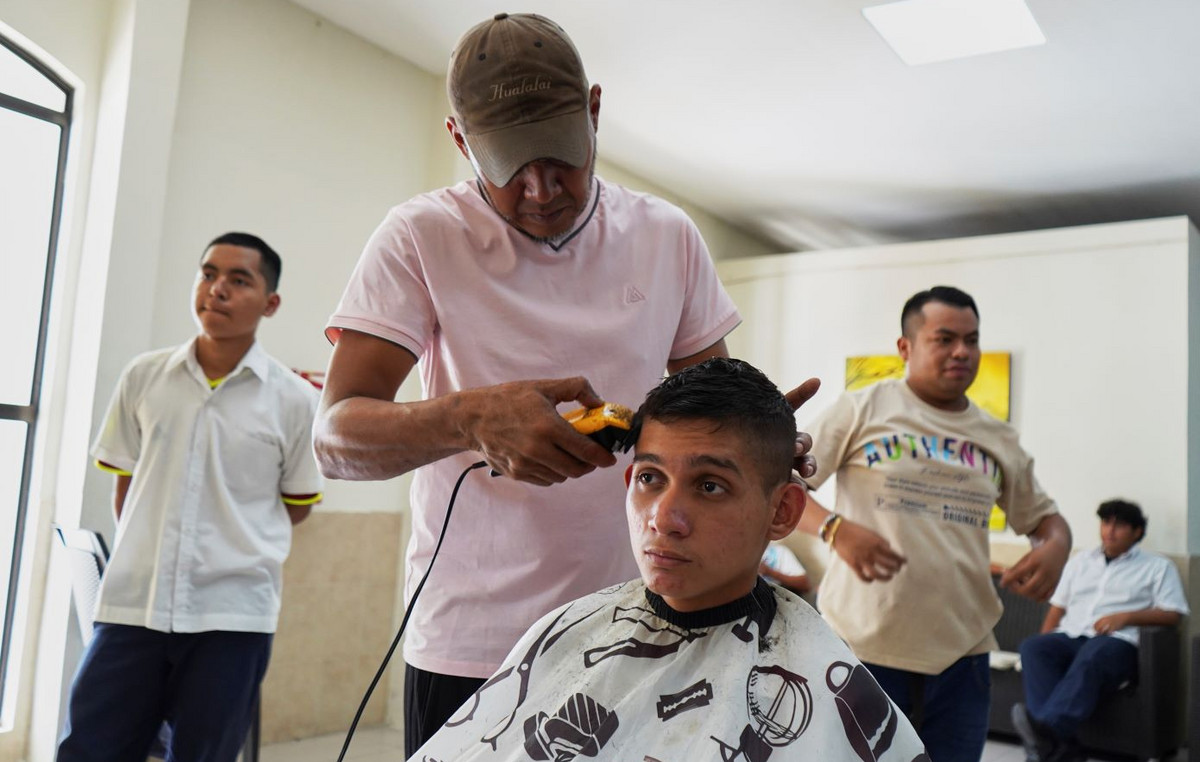“In the middle of the journey of our life I found myself in a dark forest …” thus begins the first canto of the Inferno of Dante Alighieri’s Divine Comedy (whose 700th anniversary is celebrated this year). At the time of the great poet people lived on average up to 50 years, and the period to which it refers can be compared to a particular age in a woman’s life: menopause. “Fortunately, things have changed today, and we generally reach the age of 90 and beyond. Therefore, also the feminine approach to
physiological processes that occur in the organism have changed and the attitude is no longer that of passively undergoing them, but we tend to face them more and more in order to live a normal and complete life “, he explains Cristina Varesi, medical director of the Navigli Multi-specialty Center in Milan.
It happens, however, that, engaged in the management of the many annoyances related to menopause (irritation, hot flashes, adult acne, etc.) some women consider what happens in the vagina a secondary nuisance. “The lower amount of estrogen can cause the tissues of the vulva and the outer lining of the genitals to become thinner, drier and less elastic or flexible,” explains Varesi.
A situation that also compromises sexuality, because in these conditions the lack of elasticity generates pain during intercourse. All this, however, is not inevitable even if the simplest way seems to be to reduce the opportunities for union or to use lubricants (which do not always give the desired results). It’s easy to give up. Give up… and it’s the wrong thing to do. Continuing to lead a satisfying sex life is one of the precious steps of female empowerment: it increases self-confidence, awareness and satisfaction: “invisible” moods that make a difference because they allow you to face everyday life with a more. After all, who said that giving up sexual intimacy during this period is a “normal” thing? Probably a man … But luckily the solutions exist.
EMANCIPATION MEANS ADDRESSING THE SITUATION
Even today for many women it is extremely difficult to talk about problems related to the genitals, both with the partner and with the gynecologist.. Some avoid these topics out of embarrassment and modesty, others because they experience this situation as the “ineluctable progression of life”.
Only 25% report this symptomatology to their gynecologist “spontaneously”, when at least 50% of women over 50 suffer from disorders related to menopause, and moreover only 70% of doctors investigate this type of symptomatology. “Talking about sexuality when the procreative aspect ceases, and only the playful and relationship aspects remain, often creates a sense of shame, as if the woman should only have the role of mother that was her own in the past, and as if to feel pleasure was a fault. Instead it is important to talk about it and take proper care of it ”, explains Cristina Varesi.
WHAT HAPPENS IN THE FEMALE BODY
Vaginal laxity, or wide vagina, is characterized by a lack of collagen which leads to a loss of tone of the tissues in this area, with alterations of the structural architecture accompanied by an increase in internal and external diameters. «The causes may be natural childbirth with consequent loss of elasticity which leads to episodes of urinary incontinence that are exacerbated in mature age. In this situation, the vaginal muscles are more relaxed, the vagina less elastic and the most frequent disturbance is related to sexual life: intercourse becomes less satisfactory for both the woman and the partner, due to the lower adherence of the penis to the vagina themselves ” , underlines Varesi. Let’s not forget that the passage of time compromises every organ in the body. “Aging or aging is not a disease but a path that also involves the genital system. At the level of the vulva and vagina the changes are very slow, you begin to feel them around the age of 40 and are mainly linked to the births, to important weight changes and to hormonal changes “. And then there is the menopause. «The hormonal changes cause the appearance of early symptoms called vasomotor syndrome (hot flashes, sweats, tachycardia, sleep disturbances, mood alterations) which affect about 50% of women. The estrogens produced by the ovary which constitute the “nourishment” of the vaginal mucosa are lacking, with consequent involution of the tissues. The vaginal mucosa becomes thinner, the wrinkled folds that allow it to relax during sexual intercourse disappear, the glycogen that “nourishes” the lactobacilli present in the vagina with an increase in the pH and frequency of infections is missing ». Finally, let’s not forget that the lack of estrogen, typical of this period of existence, causes a thinning of the vaginal mucosa with a reduction in blood flow and a decrease in lubrication, with important repercussions on sexual life ».
WHY ACT
When there are discomfort in the genital system, leaving things as they are is absolutely wrong. “These are disorders that result in a decrease in sexual desire, which triggers a vicious circle: pain during intercourse, poor arousal, less lubrication, and again a decrease in sexual desire. In other words, these disorders affect the quality of life ”, adds the expert.
TO BE PRACTICED IMMEDIATELY
The tools available for vulvo-vaginal well-being are different. Starting with the basic ones: lifestyle: proper nutrition, physical activity, abolition of smoking and alcohol; apply protection such as vitamin E spray to the vulva before sporting activities or bike rides; sleep without panties to leave the vulva free from clothing; limit the use of sanitary pads as much as possible and avoid synthetic ones, which increase sweating and skin maceration, possibly use those in bamboo fiber, ecological, washable, antibacterial; avoid aggressive detergents and pat dry
gently with cotton towels; avoid synthetic underwear, tights and tight pants.
THE CARE APPROACH
It moves on different fronts. “General therapies are administered by mouth or transdermally (ie in the form of patches or creams or gels to spread on the skin), indicated above all for the control of general symptoms that usually appear at the beginning of menopause and that in 20% of cases do not resolve the vulvovaginal symptoms », underlines Cristina Varesi. Defined replacement therapies, they involve the use of hormones synthesized in the laboratory or bioidentical. This last,
introduced more recently, they are of vegetable origin and are called identical because they have the same chemical structure as those produced by our body and therefore “are recognized” as if there was a “hormonal continuity between fertile age and menopause”. In pharmacies and parapharmacies, then, there are treatments to be applied locally based on vitamin E, extracts
vegetables and hyaluronic acid that used every other day, improve the production of collagen with a significant reduction in
symptomatology; topical drugs such as eggs, creams and gels based on hormones (both synthetic and biomimetic) with a moisturizing and stimulating action on the production of collagen, as well as precious elements that improve the vascularization and oxygenation of the tissues. These are over-the-counter products in addition to those sold under medical prescription; some of these products improve libido, or sexual desire; devices such as pelvic balls, small balls of different weight to be inserted into the vagina to strengthen the pelvic floor.
SOLUTIONS PROPOSED BY THE DOCTOR
In the gynecological field, precise treatment paths are proposed that serve to improve elasticity and sensitivity. Among these are the injections of hyaluronic acid which gives hydration and volume, and of carbon dioxide (carboxytherapy) to oxygenate the tissues. For some years now, the CO2 laser o Erbium it is used with excellent results in the treatment of vaginal atrophy, vaginal laxity and stress incontinence. The concentrated light increases vascularity and stimulates the renewal of the skin scaffold.
A NEW TREATMENT
A new treatment that draws on autologous therapy gives good results. “It is called Seffigyn® and consists in the removal, generally on the abdomen and hips, of adipose tissue containing many stem progenitor cells and vascular-stromal cells, capable of producing numerous growth factors”, says Cristina Varesi. “Subsequently, the implantation is performed at the vulvovaginal level, where it will bring a new stimulus to tissue regeneration, with a consequent increase in collagen and
vascularization of the tissues, restoring tone and elasticity. Both the vagina and the vulva can be treated. The entire procedure, which lasts about an hour, is painless as it requires light local anesthesia in the sampling and implantation areas ».
Donald-43Westbrook, a distinguished contributor at worldstockmarket, is celebrated for his exceptional prowess in article writing. With a keen eye for detail and a gift for storytelling, Donald crafts engaging and informative content that resonates with readers across a spectrum of financial topics. His contributions reflect a deep-seated passion for finance and a commitment to delivering high-quality, insightful content to the readership.







